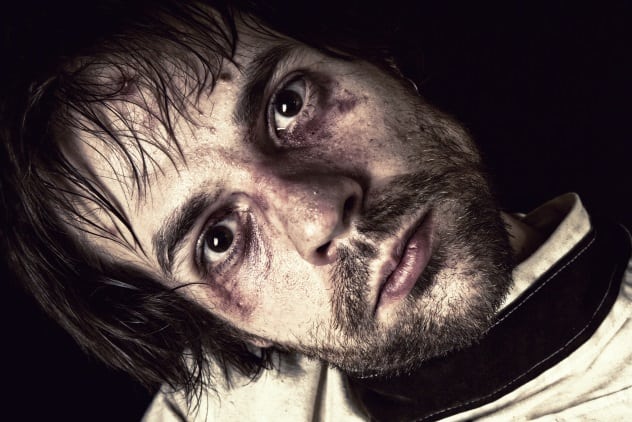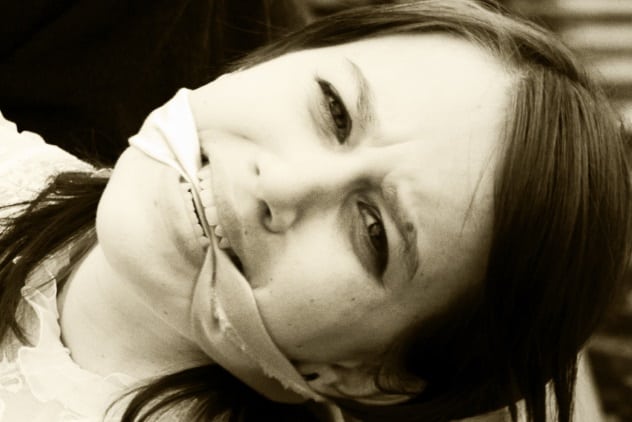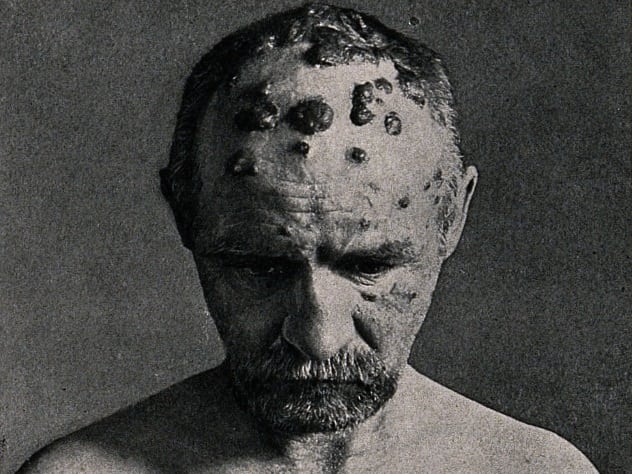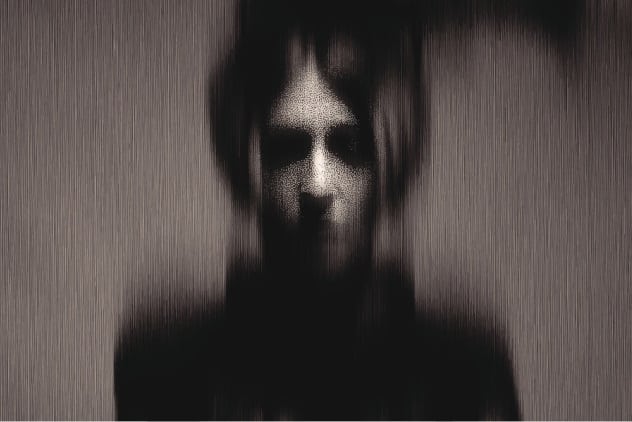 Mysteries
Mysteries  Mysteries
Mysteries  History
History 10 Surprising Stories About the Texas Rangers
 Humans
Humans 10 Philosophers Who Were Driven Mad by Their Own Theories
 Miscellaneous
Miscellaneous 10 Video-Game-Worthy Weapons and Armors from History
 Weird Stuff
Weird Stuff 10 Psychics Who Accurately Predicted Wartime Events
 The Arts
The Arts 10 Pieces of Art Inspired by a Broken Heart
 Health
Health 10 Science Fiction-Sounding New Medical Treatments
 History
History 10 Surprising Facts About the Father of Submarine Warfare
 Space
Space Ten Astonishing New Insights into Alien Worlds
 Weird Stuff
Weird Stuff 10 Bizarre Summer Solstice Rituals Still Practiced Today
 Mysteries
Mysteries Top 10 Haunting Facts About the Ghost Ship MV Alta
 History
History 10 Surprising Stories About the Texas Rangers
 Humans
Humans 10 Philosophers Who Were Driven Mad by Their Own Theories
Who's Behind Listverse?

Jamie Frater
Head Editor
Jamie founded Listverse due to an insatiable desire to share fascinating, obscure, and bizarre facts. He has been a guest speaker on numerous national radio and television stations and is a five time published author.
More About Us Miscellaneous
Miscellaneous 10 Video-Game-Worthy Weapons and Armors from History
 Weird Stuff
Weird Stuff 10 Psychics Who Accurately Predicted Wartime Events
 The Arts
The Arts 10 Pieces of Art Inspired by a Broken Heart
 Health
Health 10 Science Fiction-Sounding New Medical Treatments
 History
History 10 Surprising Facts About the Father of Submarine Warfare
 Space
Space Ten Astonishing New Insights into Alien Worlds
 Weird Stuff
Weird Stuff 10 Bizarre Summer Solstice Rituals Still Practiced Today
10 Historical Facts About The Kings County Insane Asylum
The Kings County Insane Asylum had a reputation for being one of the worst, most crowded, insane asylums in the United States. Established in Flatbush, Brooklyn, in 1845, the asylum’s history is storied, to say the least, featuring all the horrors you’d expect from a old-timey insane asylum.
In the late 1800s and early 1900s, the Kings County Insane Asylum was replete with stories of abuse, commitment for bogus reasons, and even the deaths of patients. Round that out with claims of ghosts and the paradoxical release of dangerous patients who should not have been set free, and a picture of a decidedly unpleasant place begins to form. Here are ten elucidating vignettes of the Kings County Insane Asylum.
10 The Black-Clad Ghost

While stories of abandoned asylums being haunted are hardly unheard-of, it appears as though the Kings County Insane Asylum always had its fair share of ghosts. In a newspaper report from 1892, nurses at the asylum were claiming to have had their hair pulled by ghosts. Strange lights were also seen.
According to a nurse in Ward 2, she went to investigate a strange light hovering over a door one night, and “[s]he heard a swishing noise in the corridor, then the benches in the hallway, where the insane patients [sat] during the day, were heard to rattle around at a terrible rate.”
One of the nurses described the ghost as a figure of a woman wearing a long, black, flowing gown. Other nurses said they did not see the actual ghost but believed it to be the spirit of the asylum’s former seamstress, who died there six months prior to the bizarre sightings.[1]
9 Drunks Were Good For Business

If you were inebriated in public in New York City during the late 1800s and early 1900s, your chances were pretty high for getting tossed into the Kings County Insane Asylum. That is where the police took anyone caught staggering upon the sidewalks. The place was even referred to as the “Kings County inebriate asylum.”
For instance, in 1901, James “One-Eyed” Connelly, a world-famous gate-crasher when it came to sporting events, was committed to the asylum for drinking. Medical experts claimed he was suffering from “an incurable form of alcoholic dementia.” Of course, Connelly did manage to get out of the asylum and went on to live until 1953, when he passed away in a nursing home at the ripe age of 84.
According to a New York City detective in 1882, “Any person sent [to the Kings County Insane Asylum] has to be committed by law for drunkenness habitually, and after that his friends can pay large sums of money and have him accommodated with special, often luxurious rooms.” In other words, taking in wealthy drinkers brought a lot of money into the asylum. It was good for business to declare a drunk incurable and have his family pay the asylum for his care.[2]
8 Resident Cat Lady

Some of the residents at the asylum were allowed to keep a pet. Ms. Douglass was one of those fortunate patients. For the final 25 years of her life, she was a resident at the asylum, and during that time, she was allowed to keep herself amused with the company of cats.
In 1878, it was reported that Ms. Douglas helped rear the cats in the asylum. She would spoon-feed the kittens, and she trained them to only take food from her hands. She would always keep one personal cat with her, whom she would baby nonstop. After one cat would pass away, the attendants would give her a new kitten, and the cycle would begin again.
Her final cat was a large, white feline whom she held onto dearly, even as she was slowly slipping away. After Ms. Douglass’s death, the cat was so helpless that the residents adopted it and continued to feed it from spoons and their hands because it had never eaten from the floor or a dish.[3]
7 Reports Of Abuse

As you might expect for such an institution, there were claims of abuse at the Kings County Insane Asylum, but nothing ever came of the accusations. For instance, in 1886, a patient was scalded to death. The incident was listed as an accident in the local newspaper, but no further information about the event was given. Instead, a grand jury was supposedly going to investigate the incident, but then the matter was hushed.
Nearly a year later, in 1887, an inmate named Henry Schnarbel escaped the asylum and went to the police. There, he reported that he was being horribly abused at the asylum. Dr. G.N. Ferris, the assistant superintendent of the insane asylum, immediately came forward to dismiss the charges of abuse and destroy the credibility of the patient. According to the article:
[Henry Schnarbel] is insane from epilepsy and like all epileptics, fancies that he is abused. Dr. Ferris said he courted a full investigation of the management of the institution. He thought it unfair to spread abroad the fancies of an insane man as facts, without verification. Any insane patient could be induced to tell such tales. As to this man, he was so violent that his parents could not live with him.[4]
6 The Result Of Ugly Bullies And Gossip

In the late 1800s, three sisters started a candy shop in Brooklyn. As the neighborhood grew, so did their shop, and they were wildly popular among both children and adults. However, as often happens, a certain group of people grew jealous over the sisters’ success.
One of the sisters married and moved away, leaving two of the Ryan sisters to keep the shop. Rumors began to grow in the neighborhood, and children began taunting the sisters, calling the women old maids and questioning why they were not married. The rumors and neighborhood abuse became so great that the sisters closed their candy shop. They continued to live in the apartment above the shop, but the ugly rumors about why they were single did not stop.
Under all this pressure, Mollie’s health began to give way in 1904. The other sister, Josephine, began to “rave” over the situation and was carted off to the Kings County Insane Asylum. As a result, the married sister became involved in the situation and, because she loved her sisters, broke down into hysterics. She ultimately ended up in an asylum out on Long Island.
The hospital physicians claimed that both women were in serious condition over the constant rumors and bullying. There was, according to the doctors at the asylum, no telling if they would ever recover. In the meantime, the newspaper sent a reporter to the women’s neighborhood. When he tried to interview the neighbors, none of them would admit to hearing any of the rumors and denied having anything to do with what made the women insane.[5]
5 Those Who Suffered From Assault

There were no recovery programs for those who suffered from assaults or traumatic events in the early 1900s. Any strong, negative emotions were considered a form of insanity, and instead of giving victims time to work through their hurt and anger, they were thrown into insane asylums and removed from the public’s eye.
In 1907, newspapers across the United States reported that there was a “revolting series of assaults” plaguing New York City. Nearly all of the victims involved were little girls and young women.
In one case, a 17-year-old woman was abducted from New York City, taken to Long Island, and held captive by a gang of men for three days. She was brutally beaten, and her clothes were torn to shreds. She escaped on the third night, and after being helped by a hotel proprietor, she was taken to the Kings County Insane Asylum by the police. She could barely bring herself to recount what had happened to her and was declared insane.[6]
4 An Abundance Of Syphilis Cases

Before the spirochete bacterium that causes syphilis was discovered in 1905, the disease in its late stages was called general paresis. In 1895, there was a tremendous increase of these cases caused by “a disease which in the last century was certainly not known even if it did exist.” Newspapers called it the “deadly disease of the times,” and people suffering from it were filling up the insane asylums across the US and Europe at an alarming rate.
The superintendent of an asylum in Scotland wrote:
One terrible form of brain disease, with mental symptoms, is certainly increasing. That malady may be described as a breakdown of the great center of mind and motion in the brain; it always goes on from bad to worse until it renders its victims utterly helpless in mind and body and kills him [within] a few years. No cure and scarcely any mitigation of this latter-day curse has yet been devised. It is a disease of cities, of restless lives, of active brains in their primes, sometimes of dissipation and debauchery, of life at high pressure commonly.
In 1894, Scotland uncovered 150 new cases of this disease. England had a whopping 1,400 new cases, but that was hardly a scratch compared to how rampant the disease was in the US. In the state of New York alone, it was estimated that there were 640 new cases of syphilis in one year. The largest number of those infected lived in New York City, and the Kings County Insane Asylum housed the bulk those in the late stages of the disease.[7]
3 Not Cured

At an 1879 meeting of citizens to discuss the poor treatment of the insane in the New York asylums, Dr. Richard H. Storrs gave a poor opinion of the Kings County Insane Asylum. He said, “In the [asylum], which I consider one of the worst on the face of the globe, the average of cure in 1876 was less than eleven percent . . .”
There were very few cure stories coming out of the asylum at that time, and there were numerous instances of people being declared cured who really weren’t.
In one tragic case back in 1874, a wife and mother had been sent to the asylum for derangement and was released sometime later as cured. Mrs. Devine returned to her home, and everything seemed fine for about a year. Then her husband joined other men on a strike and was spending time at home.
This change of events somehow caused 26-year-old Mrs. Devine to lose her senses. Early one morning, she grabbed a cooper’s hammer and gave her husband two brutal blows to the head. She then took a flat iron and went into the rooms of her three children. In her madness, she “pounded their brains out.”
The husband, still alive, managed to get help, but it was too late for the children. When the police asked why she did it, she said that she wanted her children to go to Heaven first and meet her there.[8]
2 He Tried To Get Rid Of His Wife

After 24 years of marriage, Mr. James C. Robertson decided it was time to get rid of his wife. All he had to do was sign an affidavit declaring that his wife was insane.
Immediately after the document was signed, Mrs. Robertson was taken for observation at the Kings County Insane Asylum. Over the next few days, she was examined until her father arrived at the hospital with a writ of habeas corpus.
The case was immediately brought before a judge, who questioned the deputy superintendent of the hospital about the woman’s detainment. Surprisingly, the deputy read the following to the court: “After a thorough examination of the patient, we find her more sane than her husband who had her sent there.”
This admission infuriated the judge, who demanded to know why the wife was kept in the asylum if she was sane. With the husband as the asylum’s only excuse for the woman’s detainment, the judge ordered a case to be brought against Mr. Robertson and that Mrs. Robertson be discharged from the hospital immediately.[9]
1 The Ghost Haunts Again

In 1892, nurses at the asylum were complaining about a ghost pulling their hair, but then the stories of the haunting died down for a few months until the spring of 1893. The ghost was back, and she was in full force.
Night attendants became too terrified to walk the haunted corridor after midnight. They were hearing the swishing sound of a trailing skirt meandering through the hall, and no natural cause could be discovered.
One night, Mrs. Greary, a nurse, was walking through the corridor when the ghost came up behind her and peered straight into her face. The nurse screamed and fainted.
The next night, one of the asylum’s doctors and a nurse patrolled the corridor with a pistol and club. Nothing showed up that night, but the doctor decided that it was in the best interest of everyone that he hire two watchmen to patrol the corridor and accompany the nurses on their nightly rounds.[10]
Elizabeth is a full-time freelance writer and enjoys researching early American history. When she is not busy digging through newspaper archives, she is usually traveling to historical sites throughout the US.
Read about more creepy insane asylums from the dark ages of psychology on 10 Tragic Cases From Turn-Of-The-Century Insane Asylums and 10 Tragic Cases From Turn-Of-The-Century Insane Asylums.








